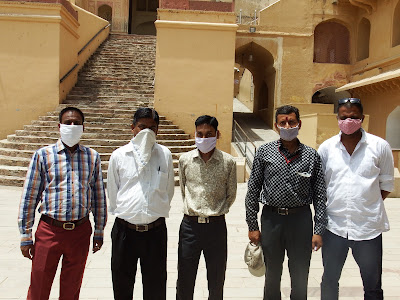I caught the mythology and history bug while reading comics based on great Indian epics like the Mahabharata and Ramayana and loved visiting historic monuments since I was a small child. Whenever my family used to visit these monuments or landmarks we always used to hire a guide to show us around. I was always stunned to see the immense knowledge a guide had about that particular place, especially considering that most of these people could not read and write. Gradually, I developed a strong obsession with the history and heritage of my country and started associating myself further with it.
Recently, I read reports of monuments being reopened in India after a 2-month lockdown, but almost instantly realized that people won't visit these places until this crisis completely subsides and a vaccine for the virus is introduced. This thought led me to think about the tourist guides working in these monuments. It was pretty clear that the tourist guides were completely jobless amid this pandemic and had no other source of income. Moreover, there was no one reaching out to help tourism workers.
Considering this, I decided to help the tourism workers on a small scale and bring out their voices in front of the world. I further decided to focus exclusively on the tourism workers in the Amer fort as this monument was geographically the closest to where I live, also I had visited this monument so many times that I personally knew some of the guides here.
Hearing the stories of these guides were very emotional and heartfelt. The contribution of tourism workers to the heritage of India is invaluable. They have served as the unsung caretakers of our historic monuments for generations. They play an immensely significant role in India's tourism-based economy, but their contribution is greatly underrated.
Please watch this youtube video for the virtual tour more info:


Comments
Post a Comment
Any suggestions/thoughts are welcome